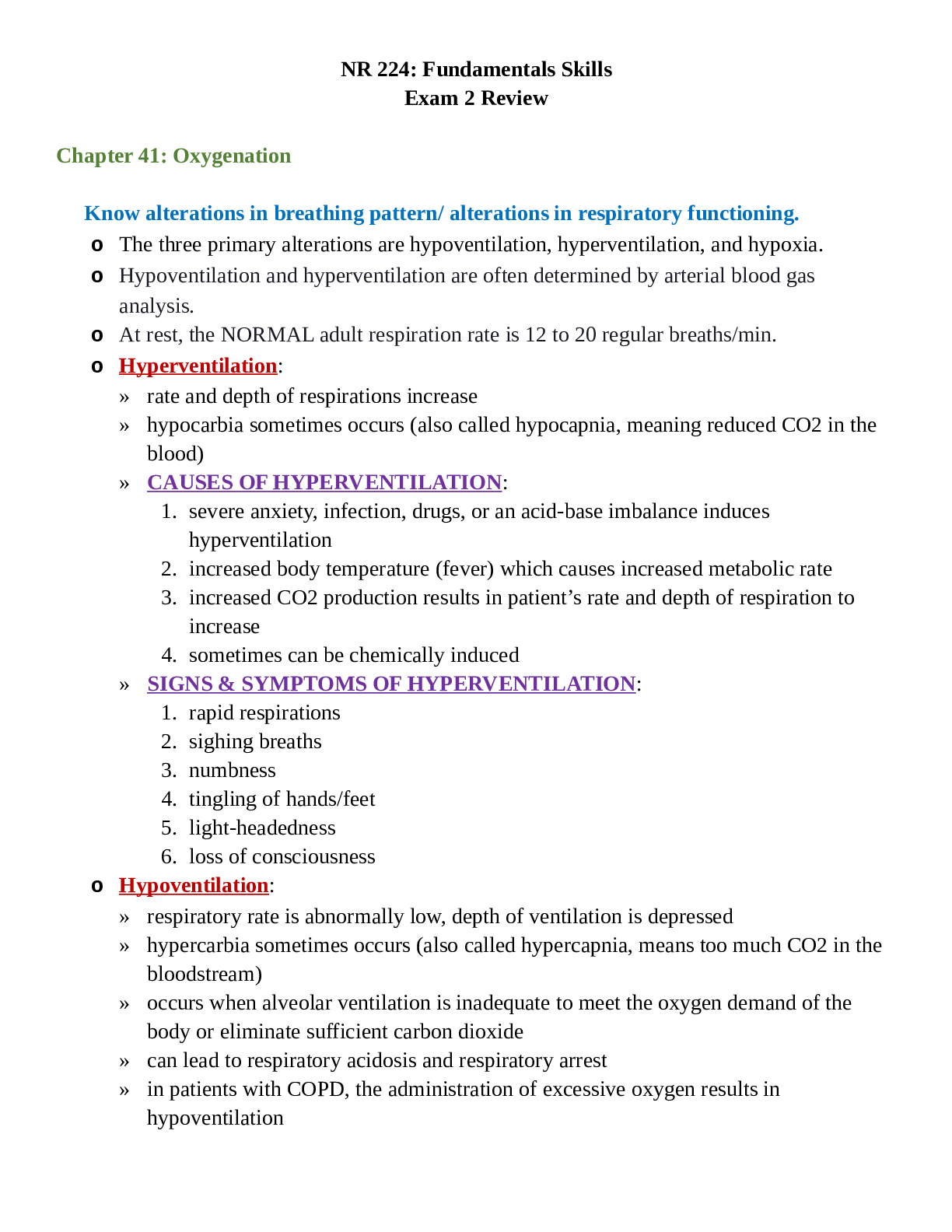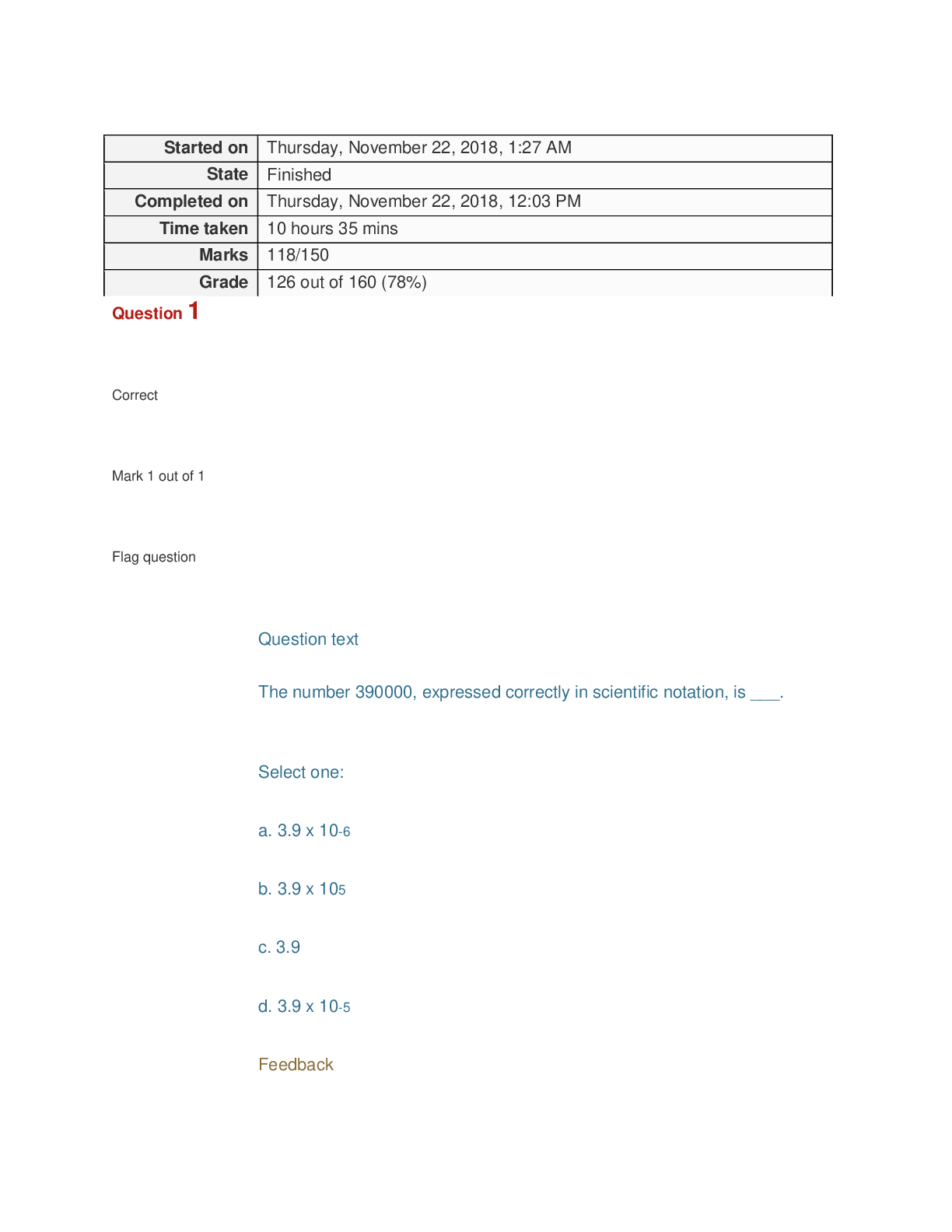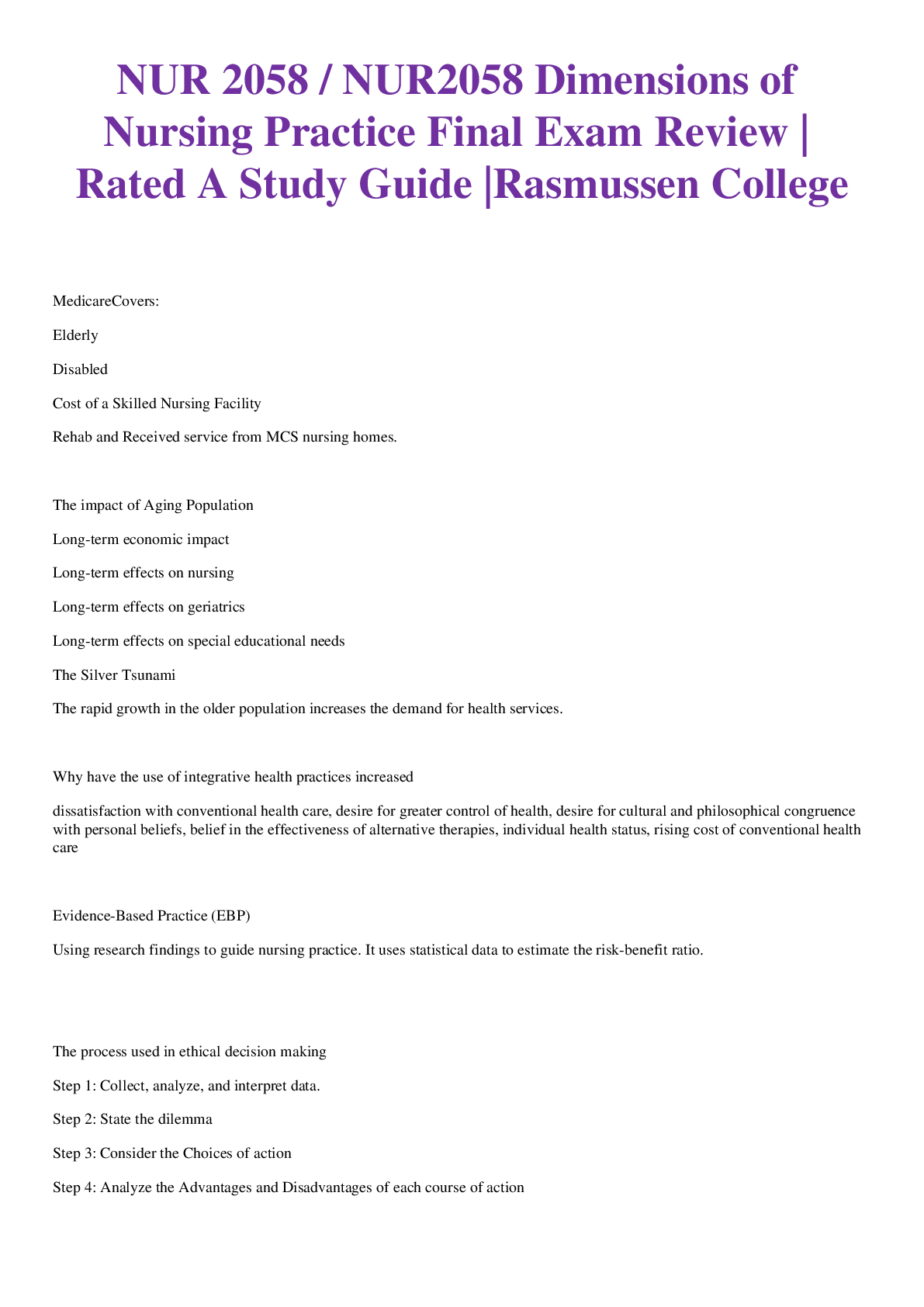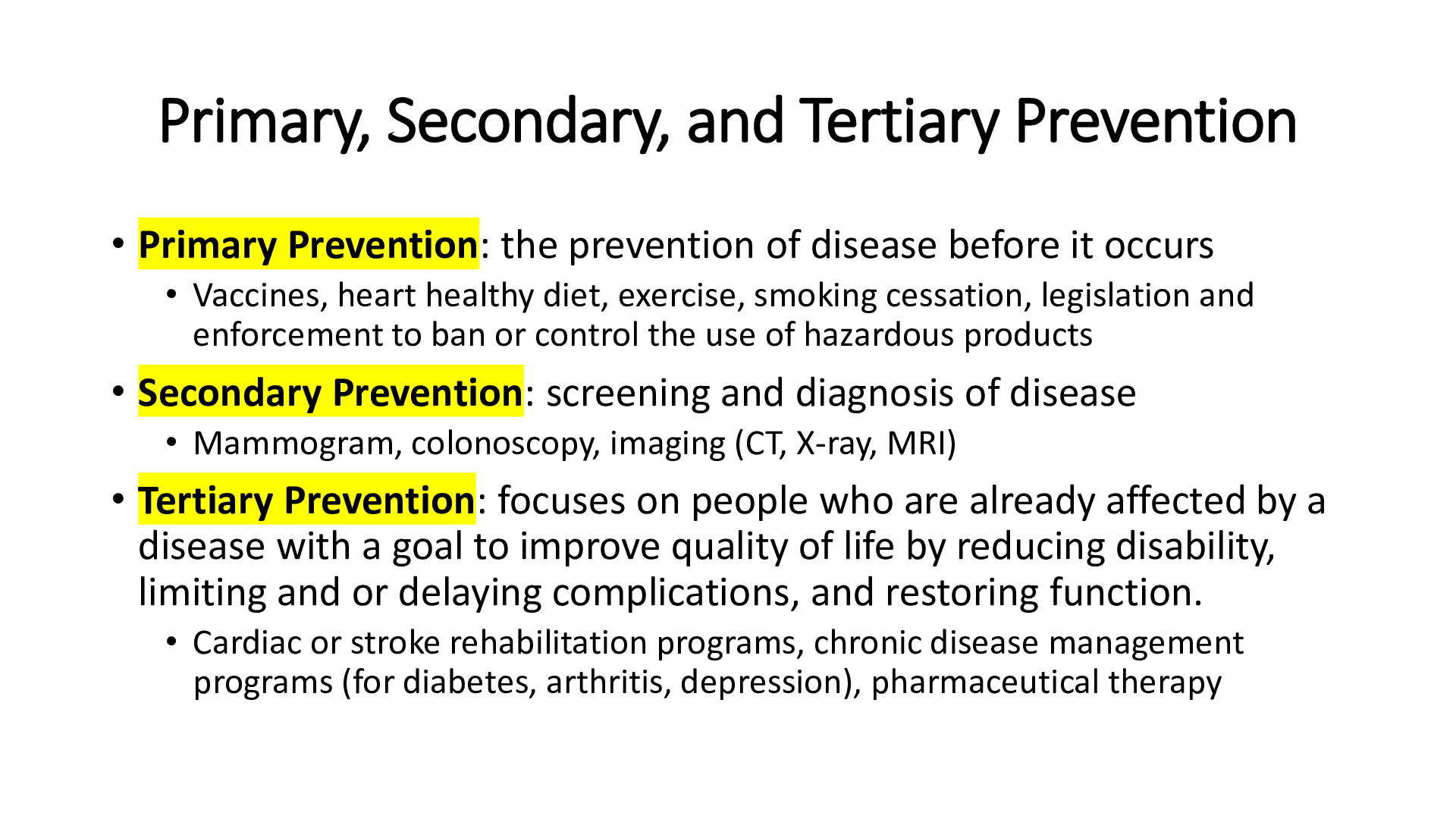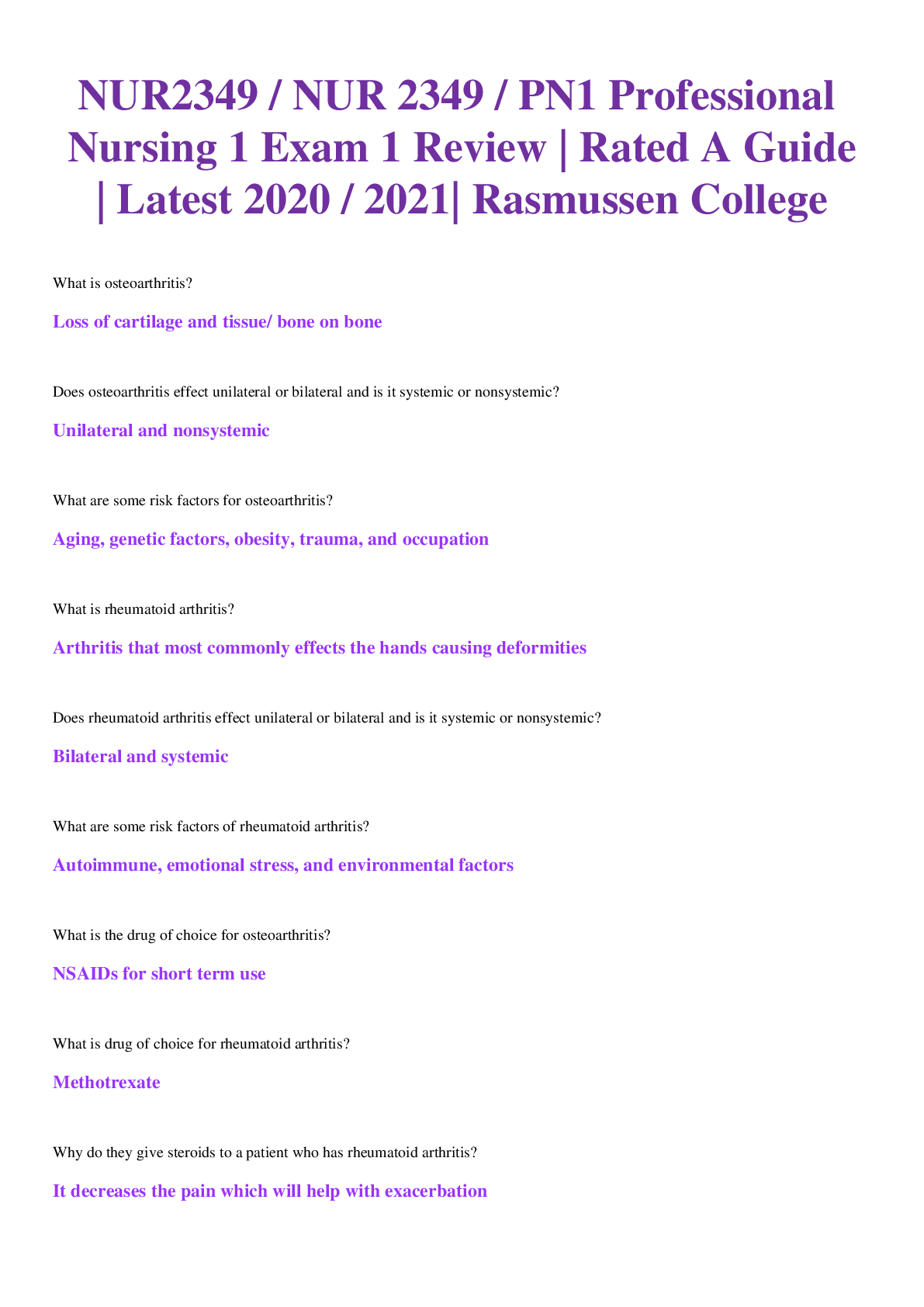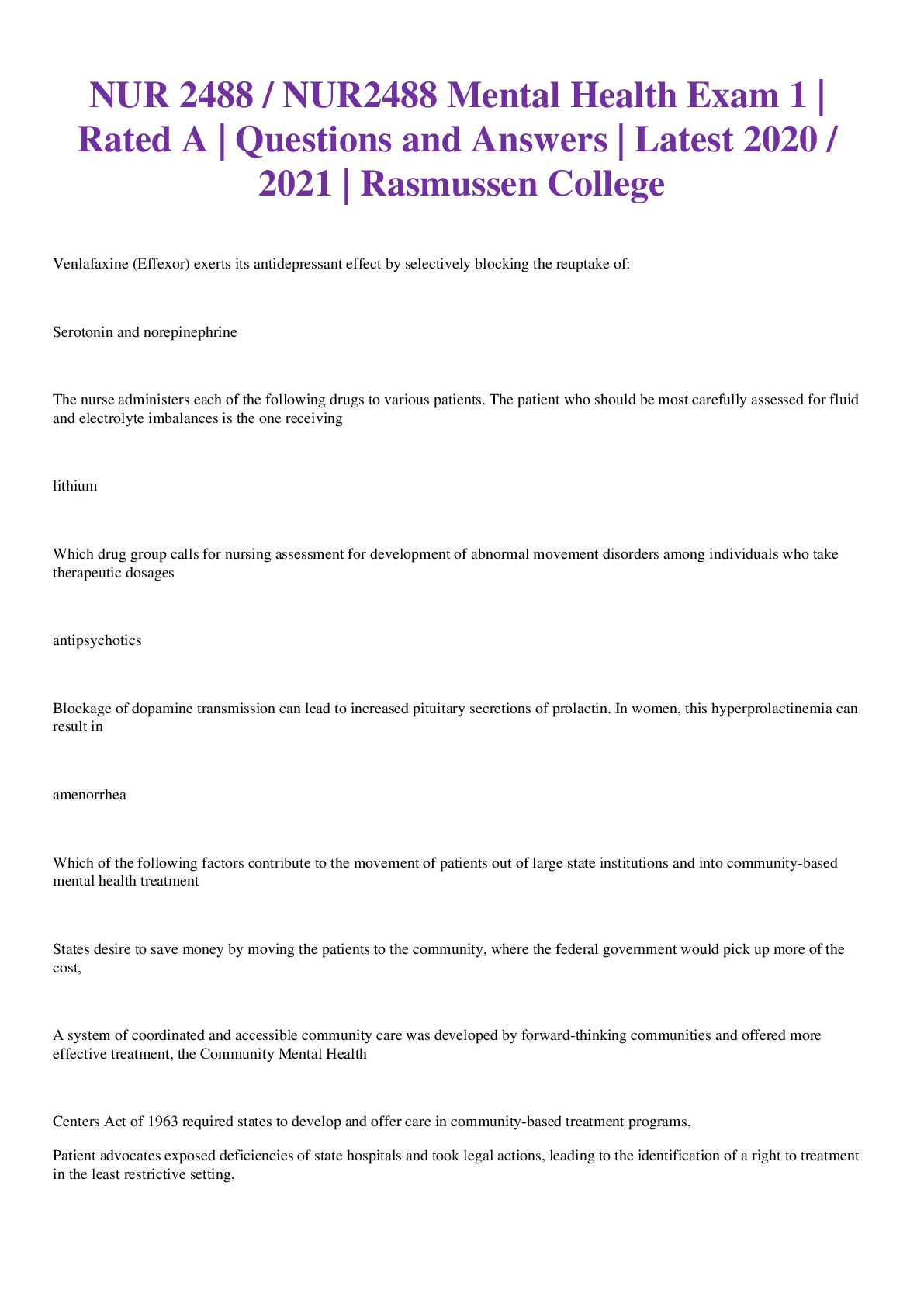Computer Science > EXAM REVIEW > University of Maryland, College Park ENEE 446Exam 1 Spring 2017. ALL ANSERS CORRECT (All)
University of Maryland, College Park ENEE 446Exam 1 Spring 2017. ALL ANSERS CORRECT
Document Content and Description Below
ENEE 447 Spring 2017: Mid-term Exam (Solution) 9 March 2017, 9:30 A.M. - 10:45 A.M. Name: Note 1. If you perceive any ambiguity, state your assumptions explicitly. Note 2. All work on this exam is... to be wholly your own. Consulting (or copying) from other students’ answers, or aiding other students (by verbal communication or by showing your answers) will be considered a violation of the academic honor code. Violations will result in a grade of XF for the course. 1. (5 points) Choose the best answer. To get full credit, provide a 2-3 sentence explanation why you chose that answer. (i) Which of the following is not a mechanism for implementing mutual exclusion? (a) monitor (b) test-and-set instruction (c) semaphore (d) interrupt Monitors, test-and-set instructions, and semaphores are used for implementing mutual exclusion. Interrupts, on the other hand, are used to stop the current process, and give control to the OS. (ii) Which of the following is not a function performed by typical operating systems? (a) register allocation (b) memory allocation (c) file system management (d) process scheduling Memory allocation, file system management, and process scheduling are functions performed by an OS. Register allocation, on the other hand, is done by the compiler. (iii) Which of the following is not done via a system call? (a) Creating a child process (b) Reading from shared memory (c) Reading from an I/O device (d) Sending a message to another process Reading from shared memory is done by regular LOAD instructions, not by a system call instruction. All of the remaining actions are done by executing a system call instruction, which transfers control to the OS. (iv) Thread creation is simpler than process creation because it doesn’t involve creating/updating: (a) a separate stack memory (b) a separate heap memory (c) any data structures (d) none of the above. Thread creation involves creating a separate stack memory. It also involves creating new data structures (such as TCB) to keep information about the thread. The heap memory is shared by the thread along with its parent thread. (v) Which of the following is not needed in a single-CPU system for an OS to implement multi-tasking? (a) a hardware timer device that periodically sends interrupts (b) two modes of operation (User Mode and Kernel Mode) (c) a physical memory system that can hold the memory address space of all active processes 1 [Show More]
Last updated: 1 year ago
Preview 1 out of 5 pages

Reviews( 0 )
Document information
Connected school, study & course
About the document
Uploaded On
May 02, 2021
Number of pages
5
Written in
Additional information
This document has been written for:
Uploaded
May 02, 2021
Downloads
0
Views
48

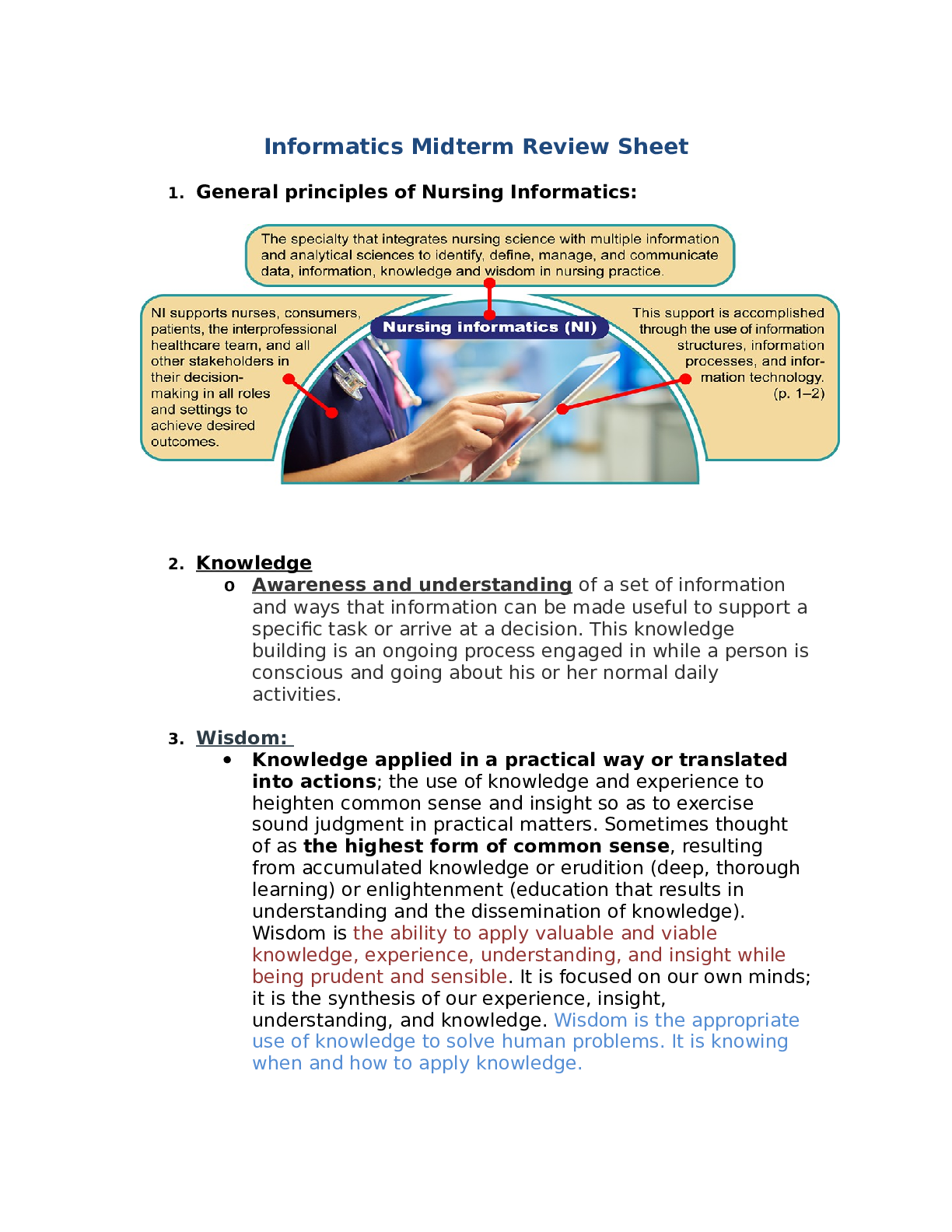



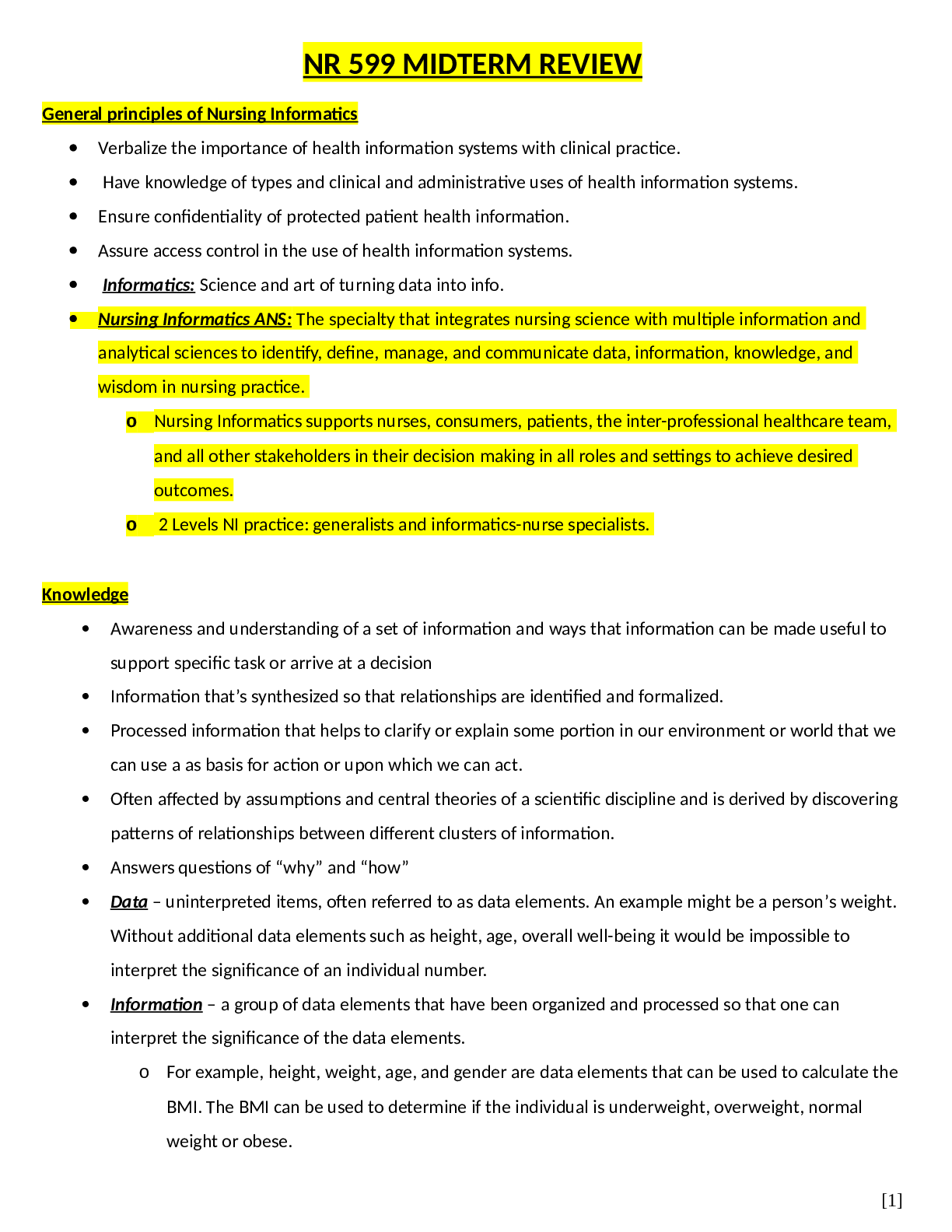
.png)

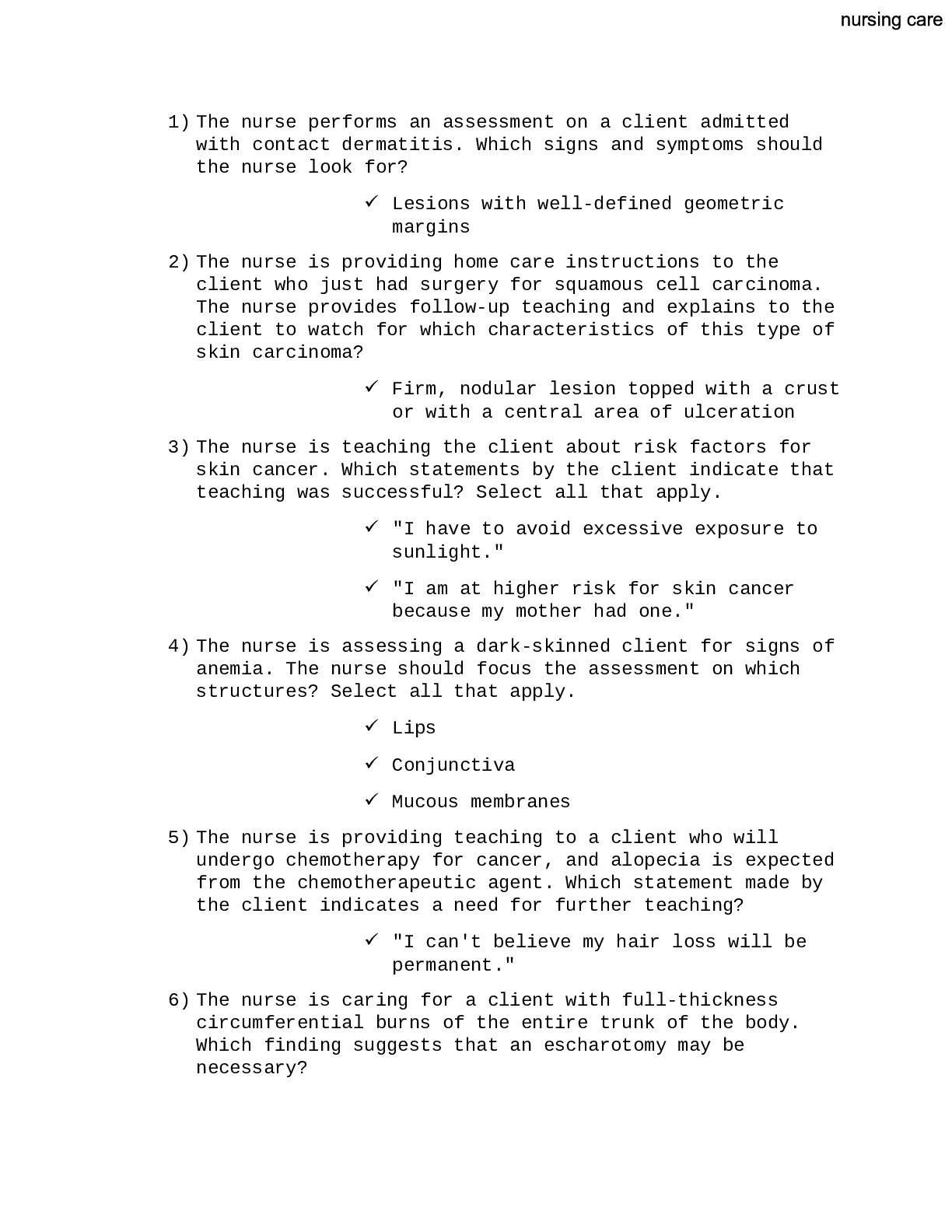
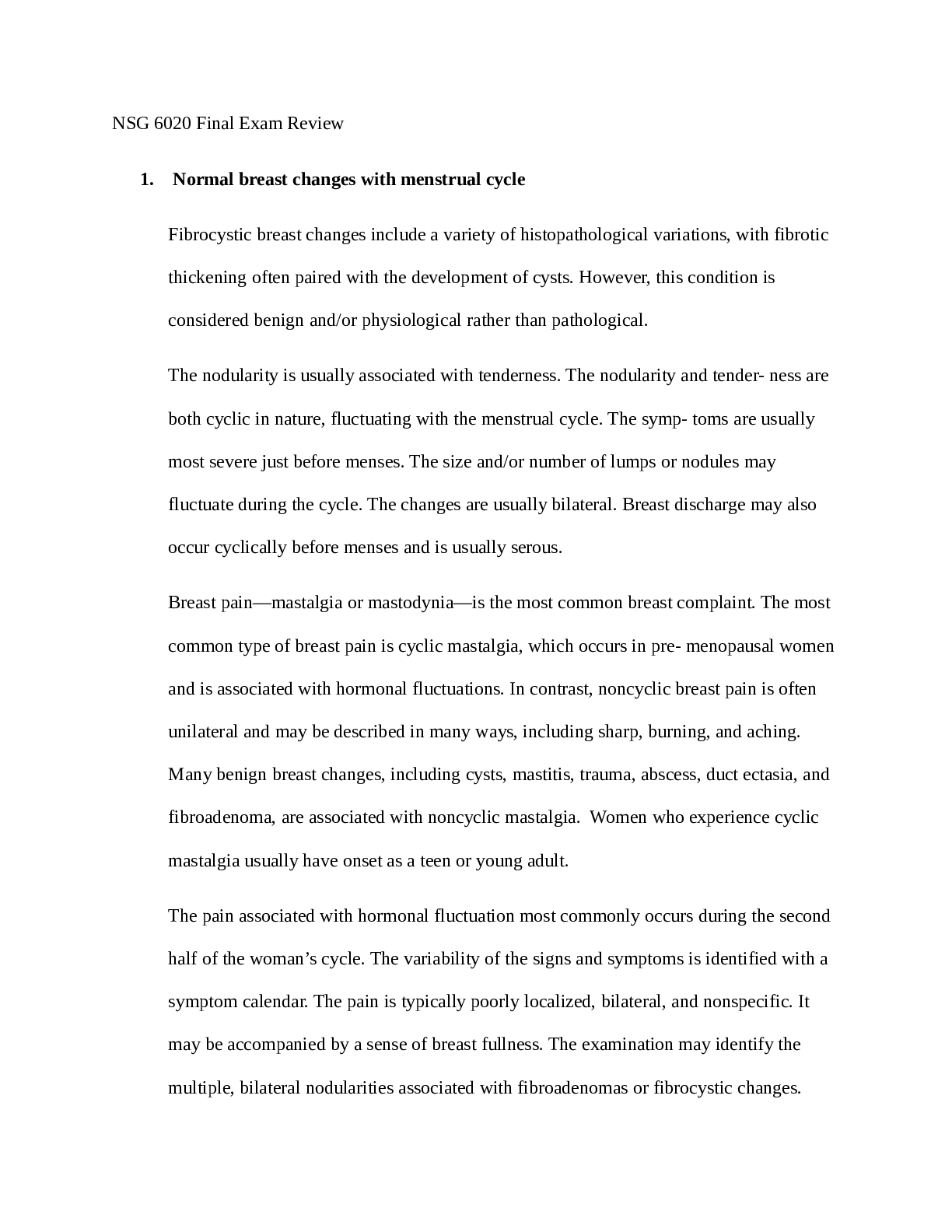

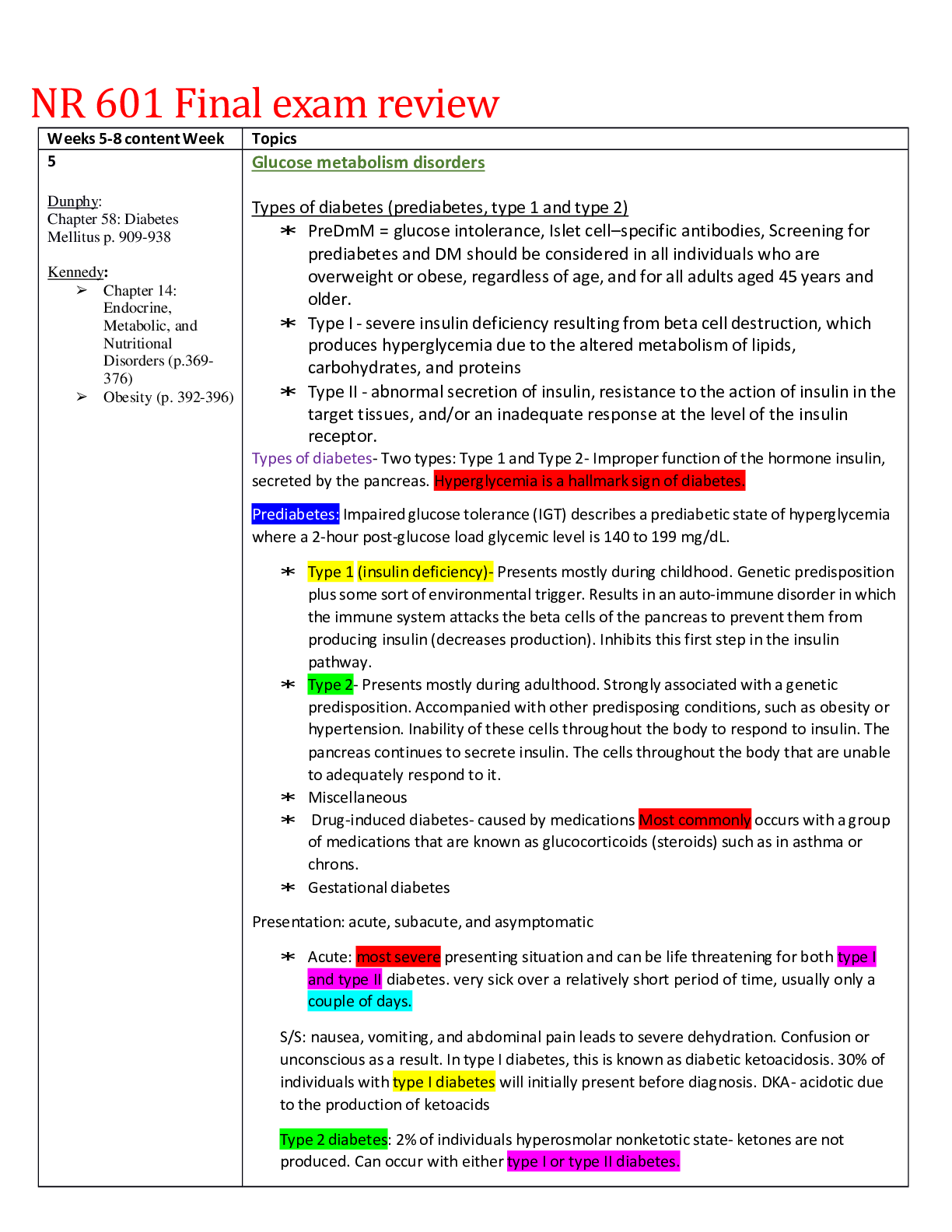
.png)

